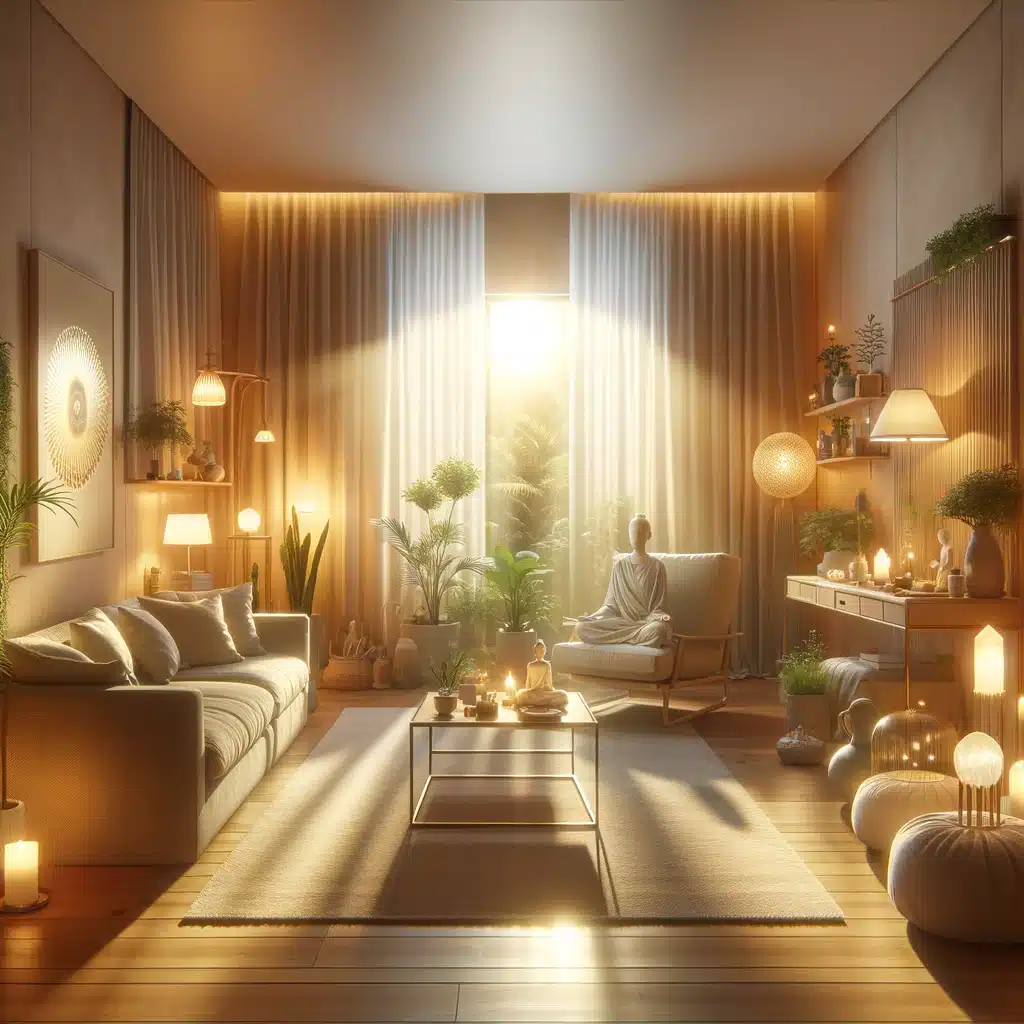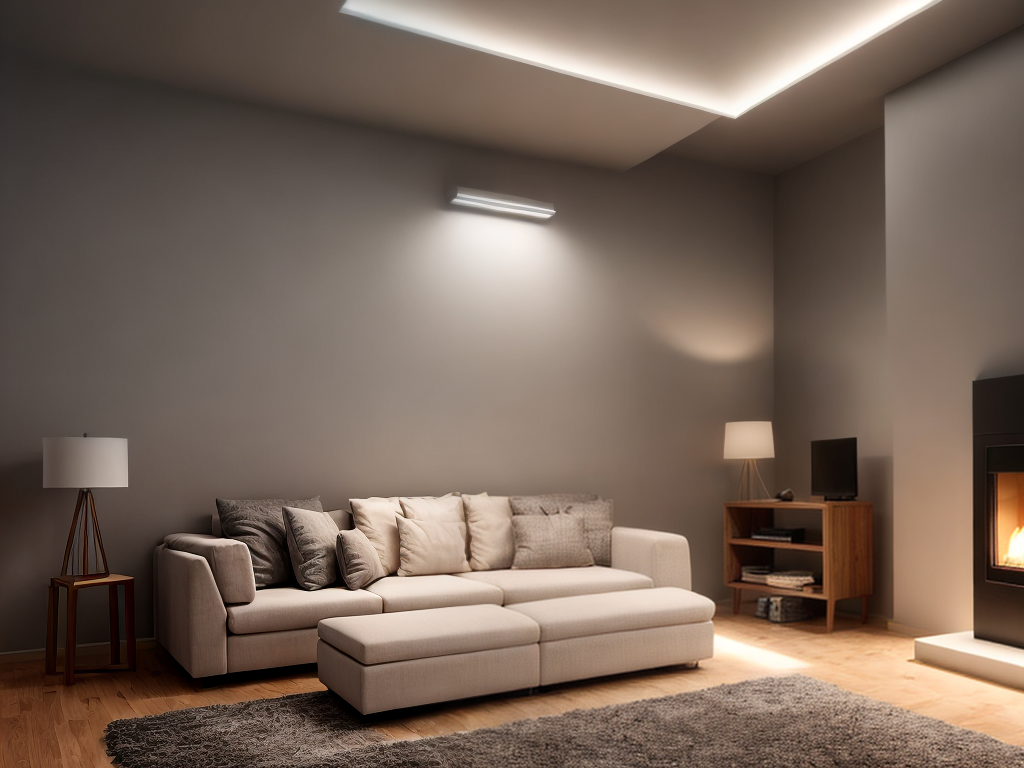Understanding LED Lighting: A Beginner’s Guide is designed to provide you with the knowledge and skills needed to master the world of LED lighting. In this guide, we will explore how LED lighting works, the advantages it offers, and the different color temperatures available. We will also delve into the various types of LED light bulbs and the factors to consider when choosing the right ones for your needs. Additionally, we will provide you with tips and best practices for installing LED lighting, as well as debunking common myths and misconceptions surrounding this technology. By the end of this guide, you will have a comprehensive understanding of LED lighting and be equipped to make informed decisions about your lighting choices.
Key Takeaways
- LED lighting is highly efficient, with very little energy wasted as heat.
- LED bulbs have a much longer lifespan, lasting up to 25 times longer than incandescent bulbs.
- LED lighting contributes to a more sustainable environment by reducing energy consumption.
- Understanding LED color temperatures allows for the selection of the desired ambiance.
How Does LED Lighting Work
LED lighting works by using a semiconductor device that emits light when an electric current passes through it. This is in contrast to traditional lighting, which typically uses incandescent or fluorescent bulbs that rely on heating a filament or passing electricity through a gas to produce light. The science behind LED lighting is based on a phenomenon called electroluminescence. When an electric current is applied to the semiconductor material, the electrons within the material become excited and jump to a higher energy level. As these electrons return to their original energy level, they release energy in the form of light. This process is highly efficient, as very little energy is wasted as heat, unlike in traditional lighting methods. LED lighting not only offers increased energy efficiency, but also longer lifespan and greater durability compared to traditional lighting options.
Advantages of LED Lighting
LED lighting offers several advantages over traditional incandescent bulbs. Firstly, LED bulbs are highly energy-efficient, consuming significantly less energy than incandescent bulbs. This not only helps reduce electricity bills but also contributes to a more sustainable environment. Secondly, LED bulbs have a much longer lifespan compared to incandescent bulbs, lasting up to 25 times longer. This means less frequent replacements and lower maintenance costs. Lastly, while LED bulbs may have a higher upfront cost, they are more cost-effective in the long run due to their energy efficiency and longevity.
Energy-Efficient Alternative to Incandescent Bulbs
An energy-efficient alternative to traditional incandescent bulbs is LED lighting, which offers numerous advantages. One of the key benefits of LED lighting is its energy-saving capabilities. LED bulbs consume significantly less energy compared to incandescent bulbs, making them more cost-effective and environmentally friendly. LED lights are able to convert a higher percentage of energy into light, while minimizing heat loss. This results in reduced electricity consumption and lower energy bills. Additionally, LED bulbs have a longer lifespan, lasting up to 25 times longer than incandescent bulbs. This not only saves money on replacements but also reduces the environmental impact of manufacturing and disposing of bulbs. LED lighting is an excellent choice for those seeking energy-saving benefits and a reduced environmental footprint.
Long Lifespan, Cost-Effective
Saving money and minimizing environmental impact are key advantages of LED lighting due to its long lifespan and cost-effectiveness. LED lights have a significantly longer lifespan compared to traditional incandescent bulbs, making them a wise investment for both residential and commercial use. The longevity benefits of LED lighting are attributed to their advanced technology and efficient design. LED lights can last up to 25 times longer than incandescent bulbs, reducing the need for frequent replacements and lowering maintenance costs. Additionally, LED lights are highly energy-efficient, consuming up to 80% less energy than traditional bulbs. This affordability advantage translates into significant savings on electricity bills over time. LED lighting not only offers longevity benefits but also delivers substantial affordability advantages, making it a smart choice for those seeking cost-effective and eco-friendly lighting solutions.
Understanding LED Color Temperatures
When it comes to understanding LED lighting, one important aspect to consider is the concept of color temperatures. LED color temperatures refer to the perceived warmth or coolness of the light produced by the LED bulbs. This is measured in Kelvin (K) and can range from warm white (2700K-3000K) to cool white (5000K-6500K). The color temperature of LED lighting can have a significant impact on our mood and overall well-being. Warm white light, similar to traditional incandescent bulbs, creates a cozy and intimate atmosphere, perfect for relaxing or unwinding. On the other hand, cool white light mimics daylight, making it ideal for tasks requiring concentration and focus. Understanding color temperatures allows us to select the right LED lighting to create the desired ambiance and enhance productivity in different spaces.
Types of LED Light Bulbs
I want to start by talking about the different shapes of LED light bulbs. There are common shapes like A19, BR30, and PAR38, each with their own unique uses and advantages. Additionally, LED light bulbs offer energy efficiency benefits, consuming less energy and lasting longer than traditional incandescent bulbs. Lastly, LED bulbs come in a range of color temperature options, allowing you to choose the right ambiance for your space.
Common LED Bulb Shapes
LED light bulbs come in a variety of shapes, each designed for specific lighting needs. It is important to choose the right LED bulb shape to ensure optimal performance and efficiency. Here are some common LED bulb shapes and their uses:
-
A19: This is the most common LED bulb size and shape. It is perfect for general lighting in homes and offices.
-
PAR: PAR bulbs have a parabolic aluminized reflector, making them ideal for directional lighting, such as accent lighting or spotlights.
-
MR16: MR16 bulbs are small and typically used for task lighting or accent lighting. They are commonly found in track lighting or landscape lighting.
-
T8: T8 bulbs are tube-shaped and commonly used in fluorescent fixtures. LED T8 bulbs are more energy-efficient and have a longer lifespan.
Energy Efficiency Benefits
As a beginner in understanding LED lighting, it’s important to explore the energy efficiency benefits of different types of LED light bulbs. LED lighting is not only a cost-effective choice for home and business owners, but it also offers significant environmental advantages. LED bulbs are known for their energy efficiency, consuming significantly less energy compared to traditional incandescent bulbs. This energy efficiency translates into lower electricity bills and reduced energy consumption. Additionally, LED bulbs have a longer lifespan, which means less frequent replacement and reduced waste. Furthermore, LED lighting does not contain harmful substances like mercury, making it a safer and more environmentally friendly option. Understanding the environmental impact of LED lighting is crucial in making informed decisions about lighting choices for a sustainable future.
Color Temperature Options
When considering color temperature options for LED light bulbs, it is important to understand the different types available. The color temperature of a light bulb refers to the hue or tone of the light it emits. Different color temperatures have varying psychological effects and can greatly impact the overall lighting design of a space. Here are four common color temperature options for LED light bulbs:
- Warm White (2700K-3000K): This color temperature creates a cozy and inviting atmosphere, making it perfect for living rooms, bedrooms, and restaurants.
- Cool White (4000K-4500K): This color temperature creates a bright and energetic ambiance, making it suitable for offices, kitchens, and retail spaces.
- Daylight White (5000K-6500K): This color temperature mimics natural daylight, providing a crisp and refreshing light. It is commonly used in hospitals, schools, and art studios.
- Tunable White: This type of LED light bulb allows you to adjust the color temperature according to your preference, offering versatility in lighting design.
Understanding the different color temperature options will help you create the desired mood and atmosphere in any space.
Factors to Consider When Choosing LED Lights
One important factor to consider when selecting LED lights is the energy efficiency rating. LED lights are known for their energy efficiency, consuming significantly less energy compared to traditional lighting options. This makes them an excellent choice for those who want to reduce their energy consumption and lower their electricity bills. Another crucial factor to consider is the LED light intensity. LED lights come in a wide range of intensities, allowing you to choose the right level of brightness for your specific needs. Additionally, the importance of color rendering cannot be overlooked. LED lights have excellent color rendering capabilities, meaning they can accurately reproduce colors, making them ideal for tasks that require accurate color representation, such as reading or artwork. Considering these factors will help you make an informed decision when choosing LED lights.
Installing LED Lighting: Tips and Best Practices
To ensure a successful installation, following proper techniques and guidelines is crucial when installing LED lighting. Here are some tips and best practices to consider:
-
Plan your installation: Before starting, make sure you have a clear understanding of the layout and requirements of the space where you will be installing the LED lights. This will help you determine the number and type of lights needed.
-
Check for compatibility: Ensure that the LED lights you are installing are compatible with the existing electrical system. This includes checking voltage requirements and making any necessary adjustments.
-
Proper wiring: Use the correct wiring techniques to ensure a safe and efficient installation. This includes following manufacturer guidelines and using appropriate connectors and wiring methods.
-
Troubleshooting: Be prepared to troubleshoot common LED lighting issues such as flickering, dimming, or color inconsistencies. Understanding these challenges and having the necessary troubleshooting skills will help you address any issues that may arise during the installation process.
Common Myths and Misconceptions About LED Lighting
I debunked a common myth about LED lighting. There are several misconceptions surrounding LED lighting that need to be addressed. One of the most prevalent myths is that LED lights are harmful to the eyes. However, this is not true. LED lights emit a type of light called blue light, which has a shorter wavelength. While excessive exposure to blue light can cause eye strain, this is true for any light source, not just LEDs. In fact, LED lights can be designed to include filters that reduce the amount of blue light emitted. Another misconception is that LED lights are not energy-efficient. In reality, LED lights are highly energy-efficient, consuming much less electricity compared to traditional incandescent bulbs. Debunking these LED lighting myths is crucial to the mastery of understanding LED lighting.




